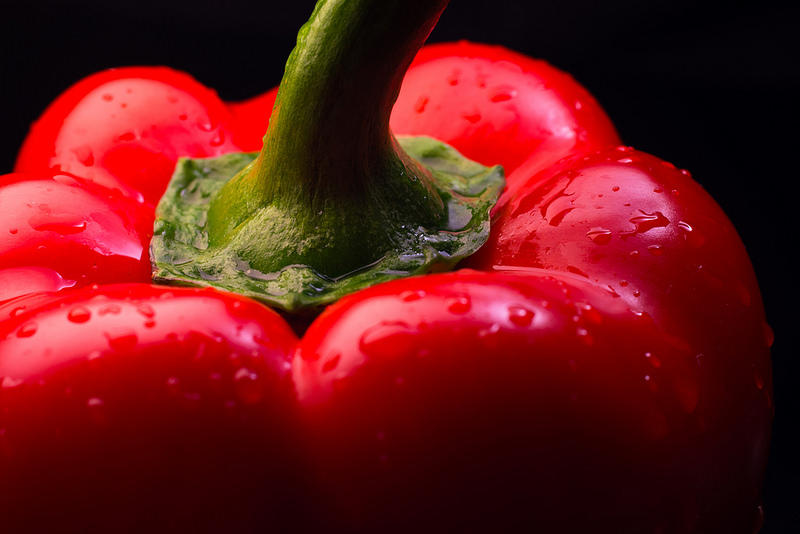Veganism is a plant-based movement that does away with using animal products in any form. Much more than a dietary change, veganism is a moral and ethical stand people take to live a cruelty-free lifestyle.
A vegan diet comprises only plants or plant-based products. It essentially means not only avoiding meat, fish, or eggs but also animal-derived products like milk, honey, and cheese. When it comes to lifestyle veganism, it means using products derived from plants, such as linen or cotton and avoiding products made from animals altogether, like leather and wool.
Are you interested in learning more about veganism and what vegan food is? Do keep reading to find out everything there is to know about vegan food, including some of the best vegan recipes and vegan baking ideas!

Vegan Diet vs Vegetarian Diet: What’s the Difference?
Knowing the difference between vegan and vegetarian diets can help you choose what to eat and avoid. While vegetarians abstain from eating meat, vegans neither eat meat nor use any products that are made from animals. Some strict vegetarians may also refrain from consuming animal-derived products like milk or eggs, too. Instead, vegans get their nutrition requirements from vegetables and other plant-based foods.
Ultimately, choosing between a vegan vs a vegetarian diet will ultimately depend on your personal choice and health goals.
Veganism is not to be confused with vegetarianism.
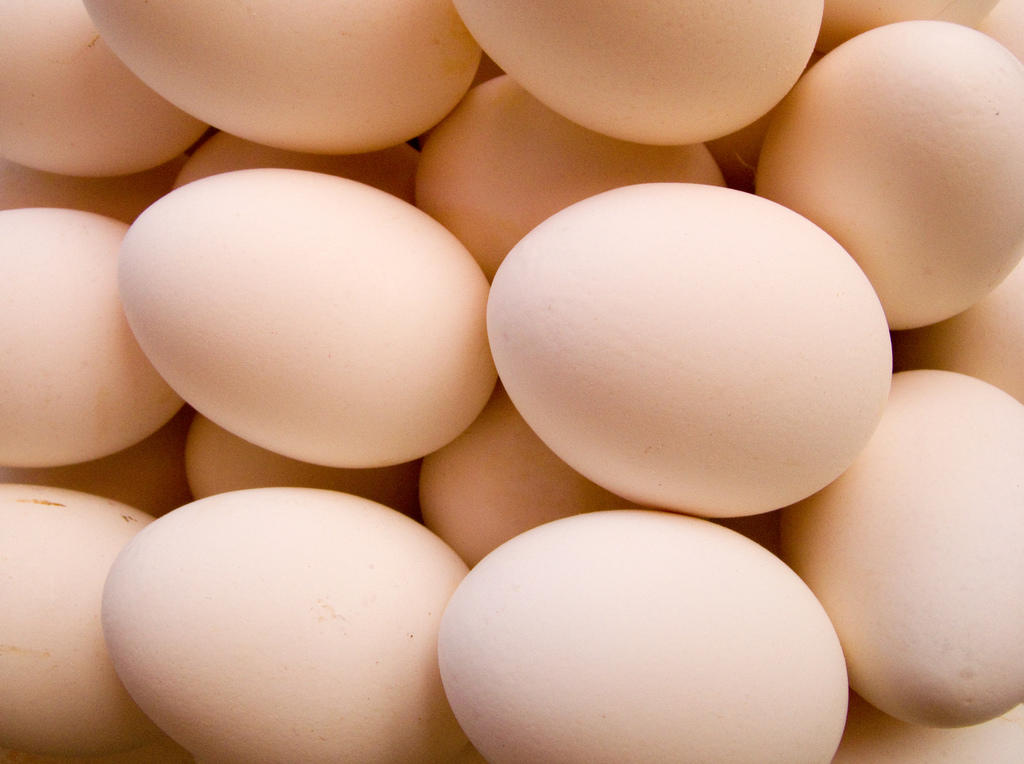
Here is a comparison table showing useful facts about vegetarianism and veganism:
| Vegetarian | Vegan |
|---|---|
| Does not eat meat, poultry, game, fish or by-products of slaughter | Does not eat meat, dairy, eggs or honey |
| Strict vegetarians avoid eating honey or foods with traces of animal products | Is against the use of animal-derived products like leather |
| The FSA reported that one of their studies conducted across 2008-2011 found that 2% of both adults and children stated they were vegetarian | At least 542,000 Britons are now following a vegan diet plan |
| Vegetarians are said to suffer less heart disease, hypertension, obesity, diabetes, cancers, bowel disorders and ball and kidney stones | Veganism reduces the risk of heart disease, diabetes, high blood pressure, hypothyroidism and some cancers |
You can find out more about vegan foods by reading the blog What Is Vegan Food And Where Do I Get It?
Why Choose a Vegan Diet
Choosing a vegan lifestyle is a powerful decision that impacts your health, the planet, and the lives of animals.
Better for the Environment
Raising animals for food takes a toll on our environment. The common consequences are water pollution, deforestation, and climate change. A vegan diet is one of the best ways to protect the environment because it drastically lowers your carbon footprint, water use, and land consumption.
Moral Reasons
The most common reason for going vegan is animal abuse and cruelty. Animals raised in factories frequently endure cruel treatment, including early slaughter, mutilation, and overcrowding. By avoiding animal products, you lessen the demand for this suffering.
Health Benefits
A vegan diet rich in antioxidants and fibre can lower your risk of suffering from heart disease, type 2 diabetes, and high blood pressure. Also, being on a vegan diet helps you lose weight due to lower calorie density and higher fibre intake.
If you are interested in learning more about vegan health benefits, take a look at the blog Vegan Health Benefits: Things You Should Know.
As previously mentioned, you don’t have to commit to a lifetime of vegan eating.
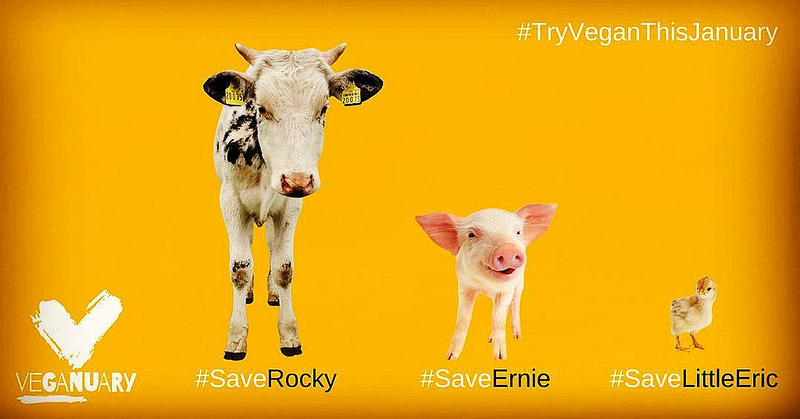

How to Transition to a Vegan Diet
Transitioning to a vegan diet can feel overwhelming, but it doesn’t have to be. When starting, begin with small steps, like having one plant-based diet per week or swapping one meal a day for a vegan option.
To make sure there are no hidden animal-derived ingredients like lactose, gelatine, carmine, casein, and albumin in your foods, check for vegan-friendly labels. Nowadays, some apps can help you quickly scan products while shopping and tell you whether a product is vegan or not.
Keeping vegan staples in your pantry will not only make meal preparation easy but also save you from the temptation of buying non-vegan items. Key pantry items you can buy include vegan cheese, lentils, canned beans, oats, nut butters, quinoa, and plant-based milk. Spice it up with soy sauce and olive oil to improve the taste.

Thanks to several options available, you can now stock up on vegan items easily. For instance, vegan cheese is a plant-based alternative that is made without the use of any animal-based ingredients. Examples include cashew-based vegan cheese, coconut oil-based cheese and soy-based cheeses.
When eating out, check for vegan-friendly options and if not available, customise meals on request. Cuisines like Thai, Indian, and Middle Eastern have a lot of plant-based dishes.
To further help you in your vegan journey, here’s an easy-to-execute beginner-friendly vegan plan you can implement:
Adopting a vegan diet isn't about being perfect. It's all about finding what suits you best.
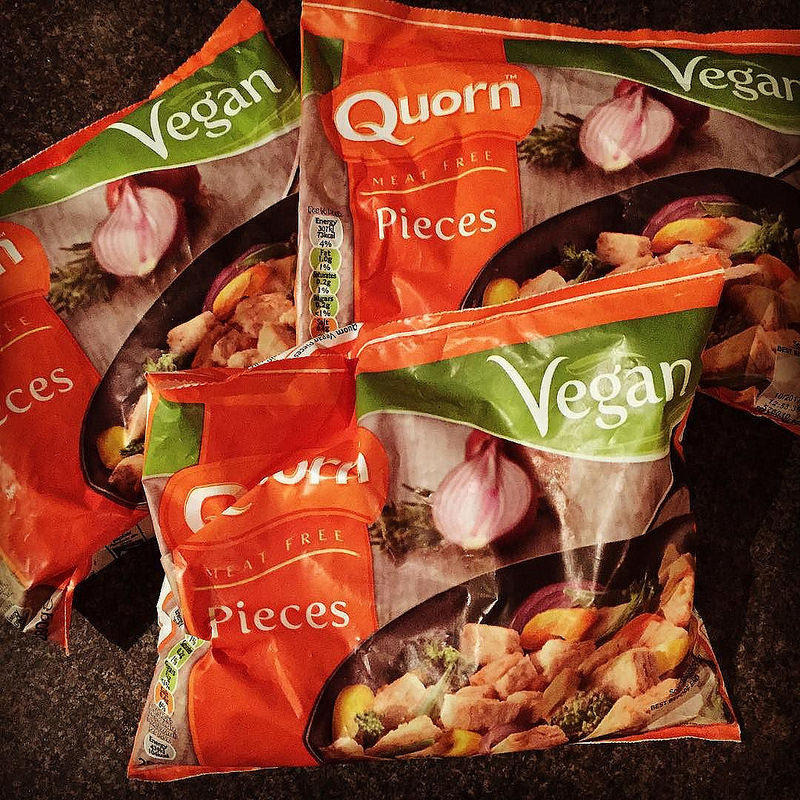
You can discover more about the vegan food ranges stocked by the above stores in the blog The Best Shops For Vegan Food.
4 Quick And Simple Vegan Food Recipes
Are you looking for some vegan food recipes that are satisfying but won’t take hours to prepare? These dishes are perfect for those busy days, leaving you with just enough time to pour yourself a nice cold glass of vegan-friendly wine while you wait for your culinary masterpiece to be ready!
Look no further than the list of three quick and simple vegan food recipes below.
1. Mediterranean Baked Sweet Potatoes
A great vegan dinner recipe, this recipe consists of:
- Baked sweet potatoes – cut in half to shorten cooking time
- Seasoned, roasted chickpeas
- Garlic-herb sauce
- Parsley-tomato salad for garnish
The cooking instructions are simple. Simply layer your baked sweet potatoes with the chickpeas, drizzle on the sauce, add the garnish, and you are good to go.
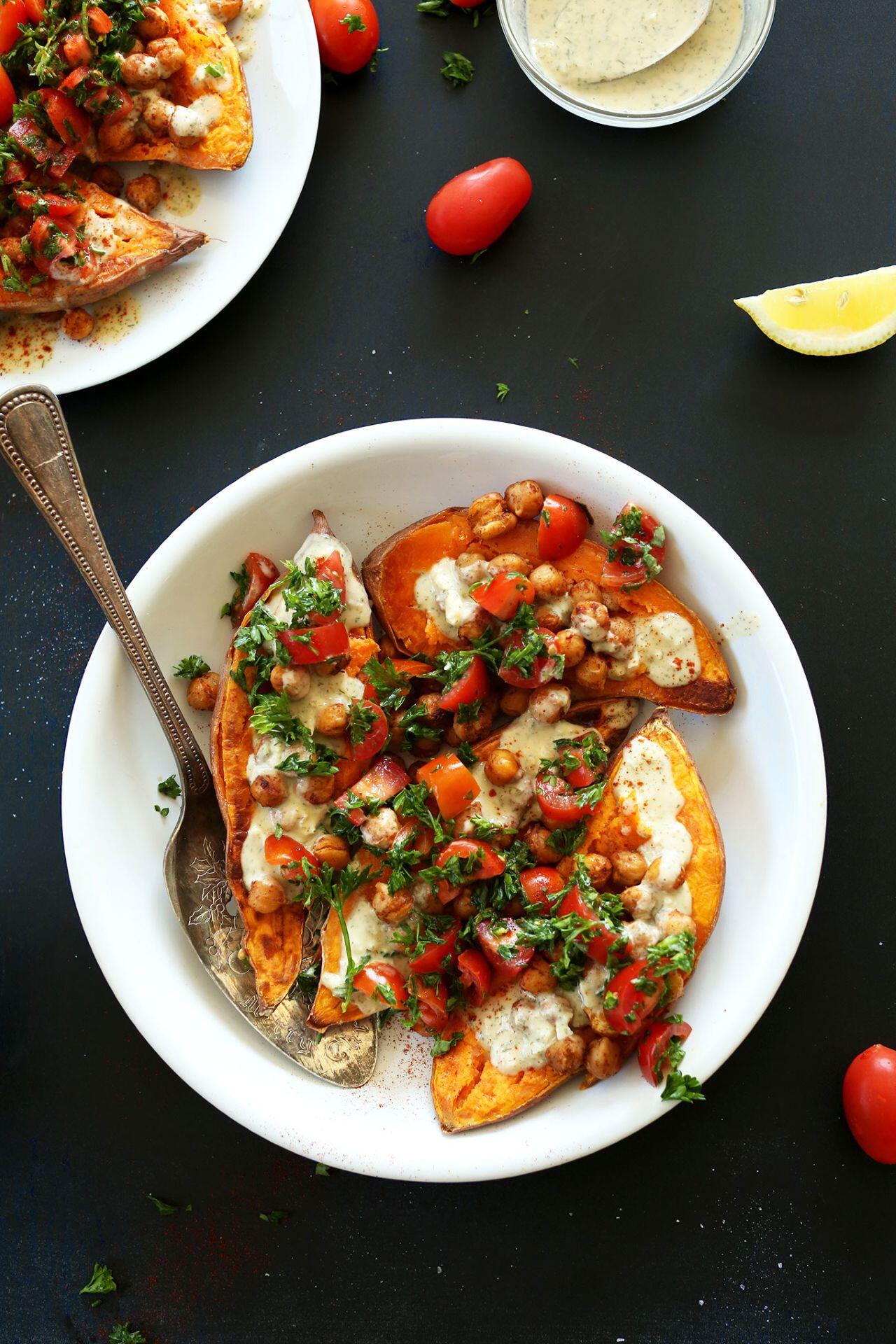
The recipe of Mediterranean Baked Sweet Potatoes by Minimalist Baker is a hearty and quick dish that can be prepared in less than 30 minutes.
2. Poblano and Portobello Fajitas: an alternative to the Mexican favourite.
Ingredients
- 1 Tbsp (15 ml) olive or coconut oil
- 1 poblano pepper and 2 bell peppers, thinly sliced
- 1 jalapeño, thinly sliced
- 1 onion, thinly sliced into rounds
- 2 large or 4 baby portobello mushrooms, sliced
- 2 ripe avocados
- Juice of ½ lime
- Sea salt, cumin, and garlic powder
- Corn tortillas
- Optional toppings: red onion, salsa, cilantro and hot sauce
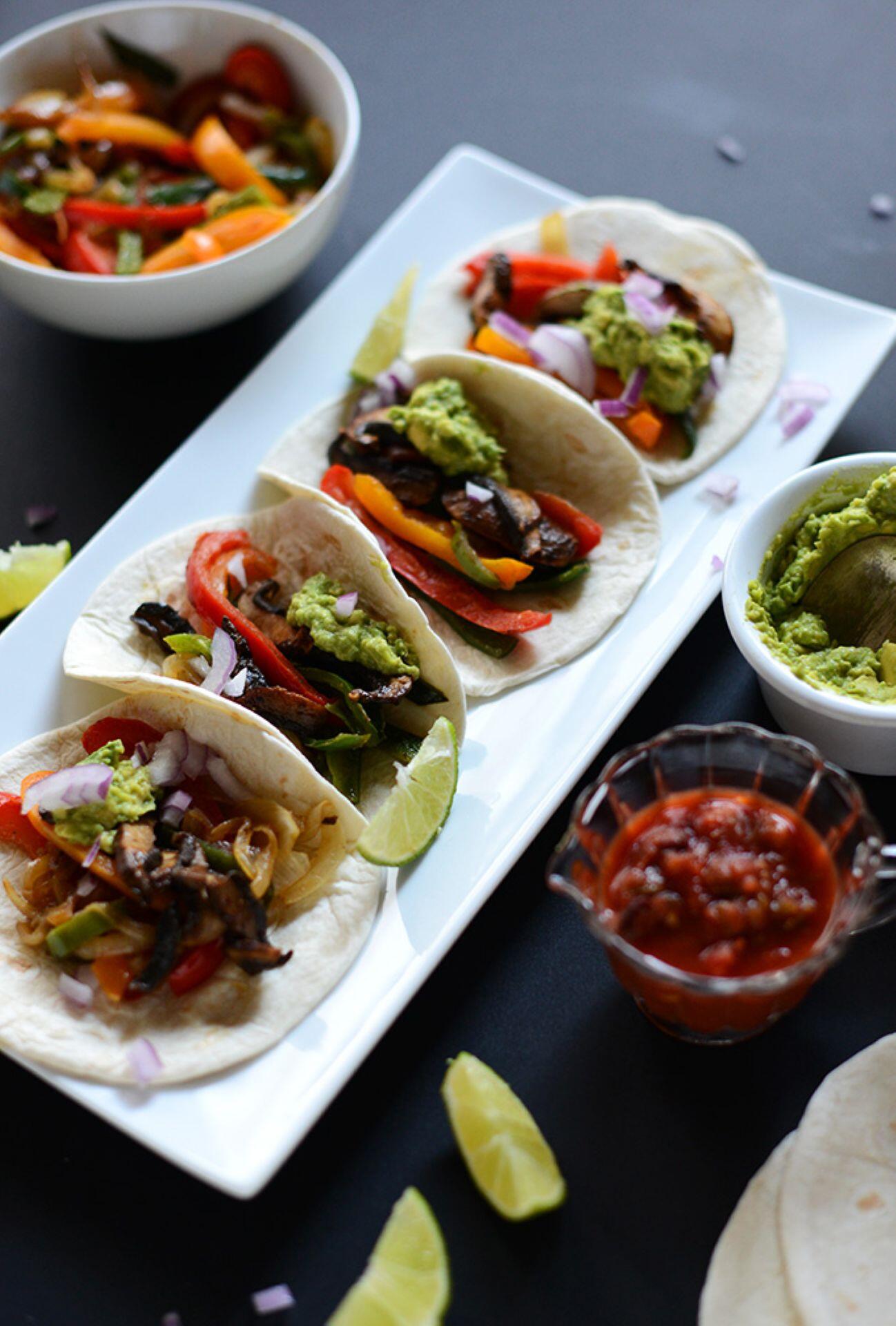
Method
- Heat a skillet and add an oil of your choice.
- Sauté the onion and peppers and season with salt, cumin and garlic powder. Cook until they are softened and slightly caramelised. Set aside.
- In another pan, add oil and cook the mushrooms with a pinch of salt. Once brown, add a dash of A1 (vegan-friendly) sauce for more flavour (optional). Remove from heat, set aside and cover.
- To prepare guacamole, mash two avocados with the juice of half a lime and a generous pinch of salt.
- Warm tortillas in the microwave and serve with peppers and onions, mushrooms, guacamole, and your favourite toppings like salsa, hot sauce, and cheese or sour cream (for non-vegan).
This awesome Poblano and Portobello Fajitas recipe is again courtesy of Minimalist Baker.
3. Vegan Mushroom Stroganoff
Ingredients
- Noodles (any variety)
- 1 Tbsp olive oil
- 1 onion, chopped
- 3 Tbsp whole wheat flour, divided
- 2 cups vegetable broth
- 1 Tbsp soy sauce
- 1½ lbs mushrooms (half portobello, half white button), cut into 2-inch chunks
- ½ tsp dried thyme
- ½ tsp dried sage
- 1 tsp lemon juice
- 1 tsp tomato paste
- ½ tsp salt
- 1 Tbsp white wine vinegar
- ¼ cup vegan sour cream (optional)
- Fresh ground black pepper (10 turns)
- ¼ cup flat-leaf parsley, minced
Method

1. Cook the noodles per the directions on the package. Under cook them a bit because they will be cooked again once incorporated into the sauce.
2. Drain and set aside.
3. In a large saucepan, add the olive oil and sauté the onions for 3 minutes over medium heat.
4. Add the flour and cook for 30 seconds, stirring constantly.
5. Gradually add the broth, soy sauce, lemon juice, and tomato paste, while stirring at the same time. Stir until the mixture becomes thick and bubbly, about a minute.
6. Add the mushrooms, thyme, sage, and salt. Stir to combine.
7. Cook for 5 minutes, stirring frequently until mushrooms have shrunk in size.
8. Add the vinegar and simmer for 4 more minutes.
9. Add the noodles, sour cream, 1 tablespoon of flour, black pepper, and parsley and cook on low for an additional 5 minutes.
10. Garnish with parsley.
Recipe courtesy Molly Patrick of One Green Planet.
For more head-turning vegan recipes, take a look at the blog 10 Vegan Recipes That Will Turn Heads.
Vegan Grocery List for Beginners
A vegan lifestyle begins with stocking your pantry with the right ingredients. Here's a beginner vegan grocery list to help you plan nutritious, easy vegan food recipes with ease.
Grains
- Brown rice
- Whole wheat pasta
- Rolled oats
- Quinoa
Vegetables & Fruits
- Spinach, kale, sweet potatoes
- Bananas, apples, berries, oranges
Legumes
- Black beans
- Different types of lentils
- Chickpeas
- Kidney beans
Are You Ready To Go Vegan?
And there you have it! Everything you need to know about becoming or remaining vegan, including some really great recipes to try out. Do you want to learn some vegan baking recipes? Here are some lip-smacking vegan baking recipes you can try in Singapore.
If you are unsure that you cannot rustle up vegan dishes at home, why not consider enrolling in cooking classes at Superprof and discover the satisfying sensation of eliminating some of the unhealthy, hidden substances that are often part of a traditional diet?
At Superprof, we have experienced teachers in gastronomy topics who can guide you on the right path, telling you about vegan meaning and what vegan food is and also guide you on how to cook vegan food.

